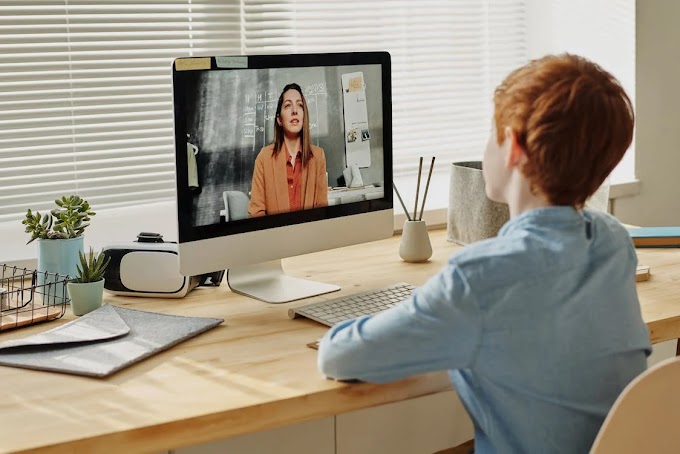Whether you’re editing a film, creating content for social media, or producing a personal video, making sure your video has the right look and feel is crucial. One way to achieve this is by applying filters and color corrections to your video. These adjustments can help set the mood, enhance the visuals, and make your video stand out.
In this blog post, we’ll explore how to use MoviePy to apply a variety of color effects and filters to your videos. From simple color adjustments to more advanced filters, you'll learn how to transform your footage and give it a polished, professional look
1. Basic Color Adjustments
MoviePy provides several ways to manipulate the colors in your videos. You can adjust brightness, contrast, saturation, and more to give your video the exact feel you want.
Adjusting Brightness and Contrast
You can use MoviePy's fx method to apply basic color corrections like adjusting brightness and contrast. Here’s how to adjust brightness and contrast in your video:
from moviepy.editor import VideoFileClip
from moviepy.editor import vfx
# Load the video
video = VideoFileClip("input_video.mp4")
# Adjust the brightness and contrast
bright_video = video.fx(vfx.colorx, 1.5) # Increase brightness by 50%
high_contrast_video = video.fx(vfx.lum_contrast, contrast=1.5) # Increase contrast
# Write the output video to a file
high_contrast_video.write_videofile("high_contrast_video.mp4", codec="libx264")
colorx: This function multiplies all color values in the video by a factor (e.g.,1.5for increased brightness).lum_contrast: This function increases the contrast by making the light areas brighter and dark areas darker.
Adjusting Saturation
You can adjust the saturation to make colors more vibrant or desaturated (black and white look). Here's an example:
# Decrease saturation to make the video appear in grayscale (desaturated)
desaturated_video = video.fx(vfx.colorx, 0.5) # Reduce saturation to 50%
# Increase saturation to make colors more vibrant
vibrant_video = video.fx(vfx.colorx, 1.5) # Increase saturation by 50%
# Write the output video to a file
vibrant_video.write_videofile("vibrant_video.mp4", codec="libx264")
2. Applying Built-in Filters
MoviePy also offers several built-in filters that you can apply to your videos, such as grayscale, invert colors, and sepia. Let’s go over some popular filters you can use:
Grayscale Effect
To convert your video to black and white (grayscale), you can use the to_gray() function:
# Convert the video to grayscale
grayscale_video = video.fx(vfx.blackwhite)
# Write the output video to a file
grayscale_video.write_videofile("grayscale_video.mp4", codec="libx264")
This will make your video black and white, which can work well for certain styles, especially in artistic or documentary videos.
Invert Colors
You can also invert the colors of your video, which is a fun and artistic effect:
# Invert the colors of the video
inverted_video = video.fx(vfx.invert_colors)
# Write the output video to a file
inverted_video.write_videofile("inverted_video.mp4", codec="libx264")
Sepia Tone Effect
A sepia tone is often used to give your video an old-timey, nostalgic look. It’s a popular effect in vintage-style videos:
# Apply a sepia tone to the video (simulate old-time look)
sepia_video = video.fx(vfx.colorx, 0.7).fx(vfx.lum_contrast, contrast=1.2)
# Write the output video to a file
sepia_video.write_videofile("sepia_video.mp4", codec="libx264")
Custom Color Adjustments with ImageFilter
MoviePy also allows you to apply custom filters using ImageFilter. For example, if you want to apply a blur effect, sharpen the image, or use other filters, you can use this functionality:
from moviepy.editor import VideoFileClip
from moviepy.video.fx import all as vfx
# Load the video
video = VideoFileClip("input_video.mp4")
# Apply a Gaussian blur effect to the video (softens the image)
blurred_video = video.fx(vfx.gaussian_blur, sigma=3) # Adjust the sigma for blur intensity
# Write the output video to a file
blurred_video.write_videofile("blurred_video.mp4", codec="libx264")
- Gaussian Blur (
gaussian_blur): Softens the video image, which is useful for a dreamy or out-of-focus effect. sigma: Controls the intensity of the blur (larger values result in a stronger blur).
You can also apply sharpening effects or experiment with other custom filters using ImageFilter.
Applying Transition Effects
In addition to applying color adjustments and filters, MoviePy allows you to add transitions to your video. For example, you can apply a fade effect between different scenes or images:
# Apply a fade-in effect at the start
fadein_video = video.fadein(2) # Fade in over 2 seconds
# Write the output video to a file
fadein_video.write_videofile("fadein_video.mp4", codec="libx264")
You can also apply a fade-out effect at the end of the video:
# Apply a fade-out effect at the end
fadeout_video = video.fadeout(2) # Fade out over 2 seconds
# Write the output video to a file
fadeout_video.write_videofile("fadeout_video.mp4", codec="libx264")
Combining Multiple Effects
You can combine multiple filters and color adjustments to create unique looks. For example, you can apply a sepia tone, increase the contrast, and add a fade-in effect, all in one video:
# Apply multiple effects
final_video = (video.fx(vfx.colorx, 0.7) # Apply sepia tone
.fx(vfx.lum_contrast, contrast=1.5) # Increase contrast
.fadein(2)) # Apply fade-in effect
# Write the final output video
final_video.write_videofile("final_video.mp4", codec="libx264")
By chaining these functions together, you can create a unique look for your videos.
Conclusion
Applying filters and color adjustments is an effective way to enhance your videos and create the right mood for your audience. With MoviePy, it’s easy to adjust brightness, contrast, saturation, and apply various artistic filters such as grayscale, sepia, or inverted colors. You can also add effects like blurring, sharpening, and transitions to make your videos visually appealing.
By using the techniques we’ve covered in this blog post, you can take your video editing skills to the next level and create professional-looking videos that stand out. Play around with these filters and adjustments to experiment with different styles and enhance your video content.







0 Comments